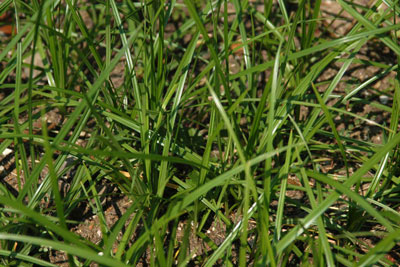Question of the Week: March 17, 2016
“Neil, what is the name of this weed?”
So that’s the question everyone asks as they show me a poorly focused cell-phone photo or gnarly, dried up plant sample. And once in a while they’ll tack on “…and what can I do to eliminate it?”

Some lawns look like there is nothing but weeds. But do you have to know all of their names?
My guess is that most people are a lot more interested in getting rid of the weeds than in knowing their names. With that in mind, I’d like to show you why you really don’t have to know all the weeds by name in order to eliminate them. All you have to do is to answer these three questions.
1. Is the weed a grass, or is it not a grass (therefore a “broadleafed” weed)?
2. Does the weed live from one year to the next from root clumps (perennial), or does it germinate, grow, flower and go to seed all in one season (annual)?
3. Does the weed grow most actively in winter and early spring (“cool-season” weed), or is it something that really grows most actively during summer and early fall (“warm-season” weed)?
Then you put your answers to work…
• If it’s a broadleafed weed such as dandelion, clover or poison ivy, you can control it with a broadleafed weedkiller (containing 2,4-D). Read and follow the label directions for best results and to avoid damage to nearby trees and shrubs. You can spray broadleafed weeds anytime temperatures are at 70F or above. Wind and imminent rainfall are, of course, side issues. Of course, you can avoid all of this from the outset simply by applying Gallery pre-emergent granules the first week of September each year.

There must be a thousand different types of broadleafed weeds in Texas lawns about now.
• Grassy weeds are handled differently. Annual grassy weeds such as crabgrass, grassburs and annual bluegrass can be prevented by applying a pre-emergent herbicide before the seeds start to sprout.
For summer annuals, apply the herbicide two weeks before the average date of the last killing freeze in your area. Repeat the treatment 90 days later.
For cool-season grassy weeds, apply pre-emergent granules during the first week of September. Mark the calendar. It’s easy to forget, and that’s the only chance you’ll get.

Crabgrass (top) is an annual grass; dallisgrass (bottom) is a tenacious perennial weed.
Perennial grassy weeds (dallisgrass is the prime example) will have to be spot-treated carefully with a glyphosate-only herbicide (no other active ingredients). Since the weedkiller spray will also kill your desirable turf, you might try cutting the bottom out of a 1-gallon milk jug. Remove the cap. Push the jug down over the clump of weedy grass and insert the wand into the jug before spraying.
• Nutsedge is a weed like no other. Known more commonly as nutgrass, it’s not a true grass. Grasses have round stems. Sedges have triangular stems. Nutsedge grows most actively May through September, and the other weedkillers mentioned above won’t touch it. Apply the original Image or Sedgehammer instead. Your nurseryman can fine-tune the directions.

Nutsedge isn’t a grass, and it’s certainly not a broadleafed weed. It requires special treatment for control.
So that’s the low down on weed controls. And we covered them without ever knowing the name of the weed.
Finally, for those few people who really do need or want to know the names of the uncommon weeds, a plant taxonomist would be your best source of help.
